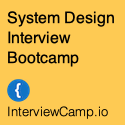Google Spanner's Most Surprising Revelation: NoSQL is Out and NewSQL is In
 Monday, September 24, 2012 at 9:12AM
Monday, September 24, 2012 at 9:12AM 
Google recently released a paper on Spanner, their planet enveloping tool for organizing the world’s monetizable information. Reading the Spanner paper I felt it had that chiseled in stone feel that all of Google’s best papers have. An instant classic. Jeff Dean foreshadowed Spanner’s humungousness as early as 2009. Now Spanner seems fully online, just waiting to handle “millions of machines across hundreds of datacenters and trillions of database rows.” Wow.
The Wise have yet to weigh in on Spanner en masse. I look forward to more insightful commentary. There’s a lot to make sense of. What struck me most in the paper was a deeply buried section essentially describing Google’s motivation for shifting away from NoSQL and to NewSQL. The money quote:
We believe it is better to have application programmers deal with performance problems due to overuse of transactions as bottlenecks arise, rather than always coding around the lack of transactions.
This reads as ironic given Bigtable helped kickstart the NoSQL/eventual consistency/key-value revolution.
We see most of the criticisms leveled against NoSQL turned out to be problems for Google too. Only Google solved the problems in a typically Googlish way, through the fruitful melding of advanced theory and technology. The result: programmers get the real transactions, schemas, and query languages many crave along with the scalability and high availability they require.
The full quote:




















